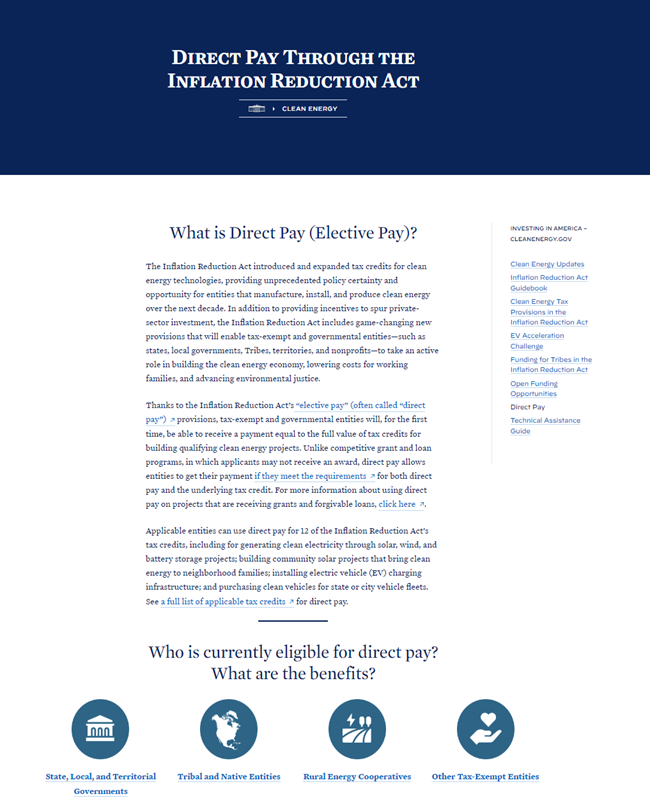The Inflation Reduction Act introduced and expanded tax credits for clean energy technologies, providing unprecedented policy certainty and opportunity for entities that manufacture, install, and produce clean energy over the next decade. In addition to providing incentives to spur private-sector investment, the Inflation Reduction Act includes game-changing new provisions that will enable tax-exempt and governmental entities—such as states, local governments, Tribes, territories, and nonprofits—to take an active role in building the clean energy economy, lowering costs for working families, and advancing environmental justice.
Thanks to the Inflation Reduction Act’s “elective pay” (often called “direct pay”) provisions, tax-exempt and governmental entities will, for the first time, be able to receive a payment equal to the full value of tax credits for building qualifying clean energy projects. Unlike competitive grant and loan programs, in which applicants may not receive an award, direct pay allows entities to get their payment if they meet the requirements for both direct pay and the underlying tax credit. For more information about using direct pay on projects that are receiving grants and forgivable loans, click here.
Applicable entities can use direct pay for 12 of the Inflation Reduction Act’s tax credits, including for generating clean electricity through solar, wind, and battery storage projects; building community solar projects that bring clean energy to neighborhood families; installing electric vehicle (EV) charging infrastructure; and purchasing clean vehicles for state or city vehicle fleets. See a full list of applicable tax credits for direct pay.
More About this Resource
Publisher: The White House
Date: May 23, 2024
Type: Website
Sector(s): Other Climate
State(s): Nationwide
